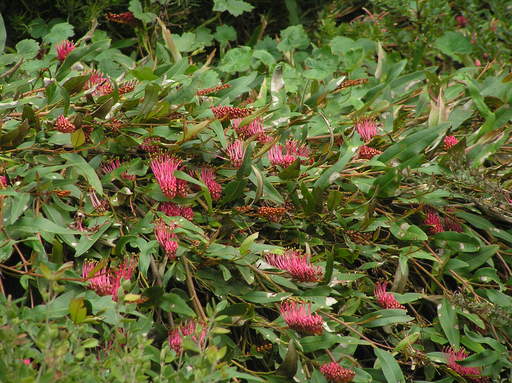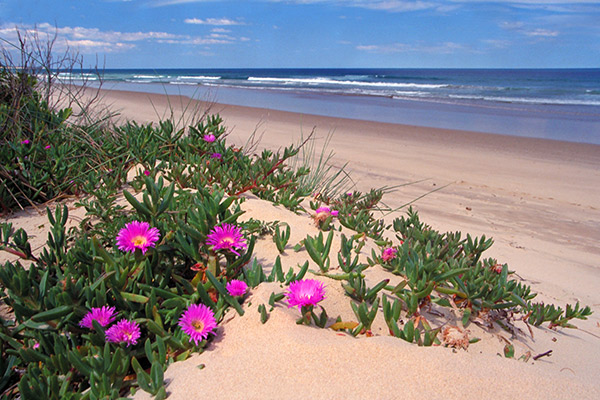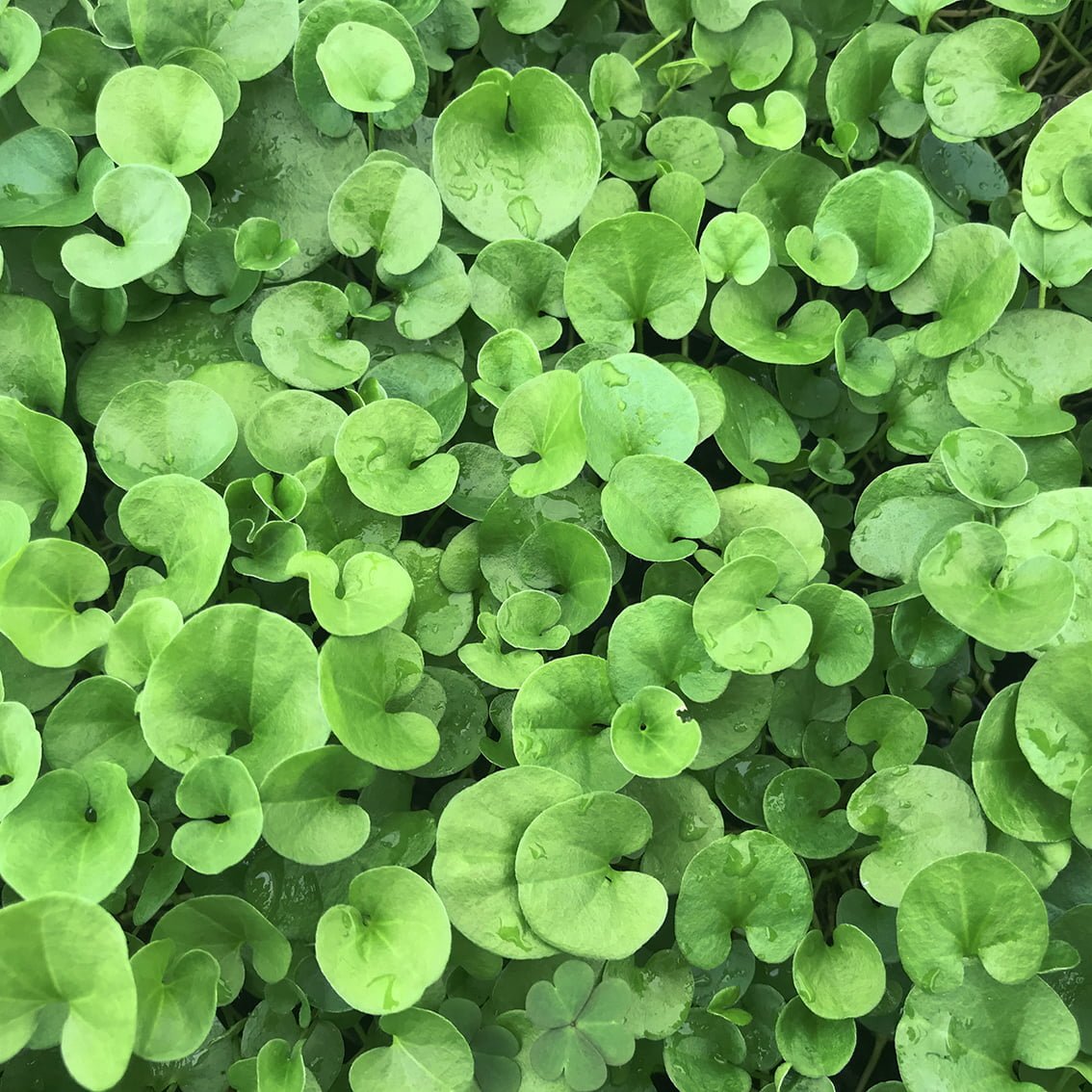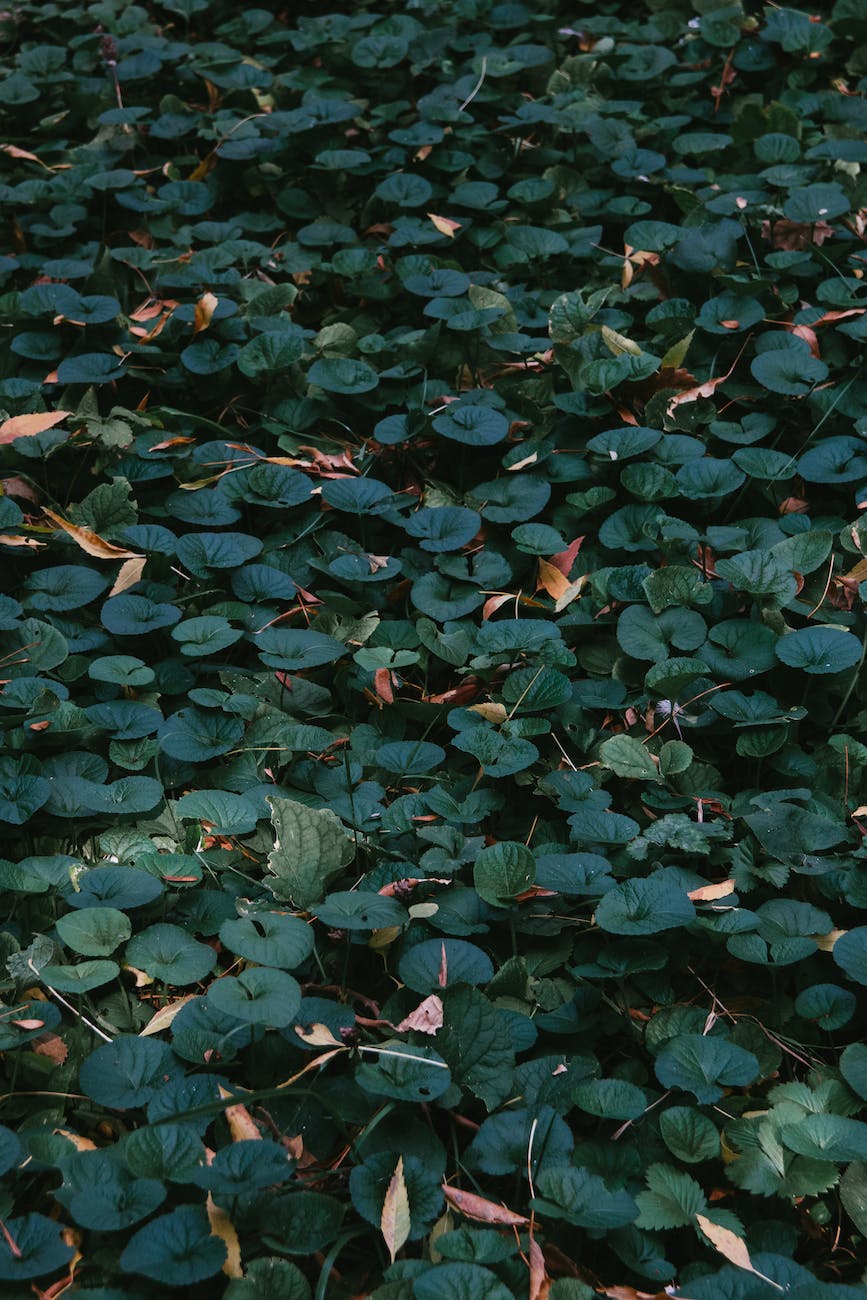Groundcover plants are essentially a living floor providing visual interest above what bare earth or mulch can provide.
Groundcovers provide numerous benefits beyond the aesthetic – they keep the soil cool, creating a better environment for the other plants in your garden. Ground covers also out-compete weeds, reducing maintenance while keeping the garden tidy.
With unsustainable and time consuming lawns making way for waterwise options, why not consider a native groundcover today!
Top 5 Australian Native groundcovers
Here are our top picks:
5. Grevillea ‘Poorinda Royal Mantle’

An adaptable and tough specimen this prostrate Grevillea variety displays visually interesting soft toothed foliage, that flows over the landscape – new growth emerges in a coppery colour before maturing to lush green.
The flowers of this native carpet resemble little magenta brushes, and emerge from winter to late spring. Quick to establish ‘Poorinda Royal Mantle’ can cover up to 6 square metres, and is drought tolerant and frost hardy – however struggles in tropical humidity.
(Note. Some people are allergic to Grevillea and should take appropriate precautions when handling this plant).
4. False Sarsparilla (Hardenbergia violacea – ‘Sea of Purple’)

This is a great plant for an area that will not be walked on – the long tangle of vining stems could easily become a trip hazard.
Hardenbergia violacea flowers in winter, but is an all year stunner with amazing foliage that resembles eucalyptus. ‘Sea of Purple’ lives up to it’s name and is covered in a profusion of deep purple violet flowers
‘Sea of Purple’ is promoted as a ground cover but like most of the false sarsparilla varieties, can in fact climb vertical surfaces, like trellis and fences – making is a useful plant for covering ugly structures.
3. Native Violet (Viola banskii syn hederacea)

The Australian native violet is such a pretty little plant. With emerald green kidney shaped leaves and a stunning purple and white flower that remains year round in a part shade condition – the native violet really has something for every garden.
A fast grower a single (and affordable) plant can cover approximately 2 square meters within 12 months if the conditions are right – Viola banksii can make a law alternative for cooler and partly shaded positions that experience only light foot traffic – too much sun or heat in summer months will wilt this delicate plant.
(The only reason Viola banksii didn’t come first in our list is due to it not being able to stand up to full sun – although it can take quite a lot if watered sufficiently.)
2. Native pigface (Carpobrotus rossii)

A fantastic addition to seaside gardens the native Pigface (Carpobrutus rossii) can be seen all around the coast of Australia covering sand dunes. Often known as ‘beach strawberries’ the small fruit of this plant are edible, and do resemble slightly salted strawberries in flavour.
With fleshy, blue-green succulent leaves, Pigface make a wonderfull ground cover for well drained or sandy soils in a full sun position, and are fire retardant – affording some extra protection to properties during bushfire season. Although Pigface would not make a great lawn alternative, it is an attractive groundcover, with pink to purple daisy-like flowers that cover the plant from Spring to Summer.
1. ‘Yilibili’ (Dichondra repens)

And the winner is… The good old ‘kidney weed’ Dichondra repens. Going by the Dharawal name of ‘Yilibili’ this one is a proven winner that can grow from full sun to shade, and make a great lawn alternative where moderate foot traffic can be expected.
Drought tolerant once established, in shaded positions the leaves will extend upwards to catch more light.

